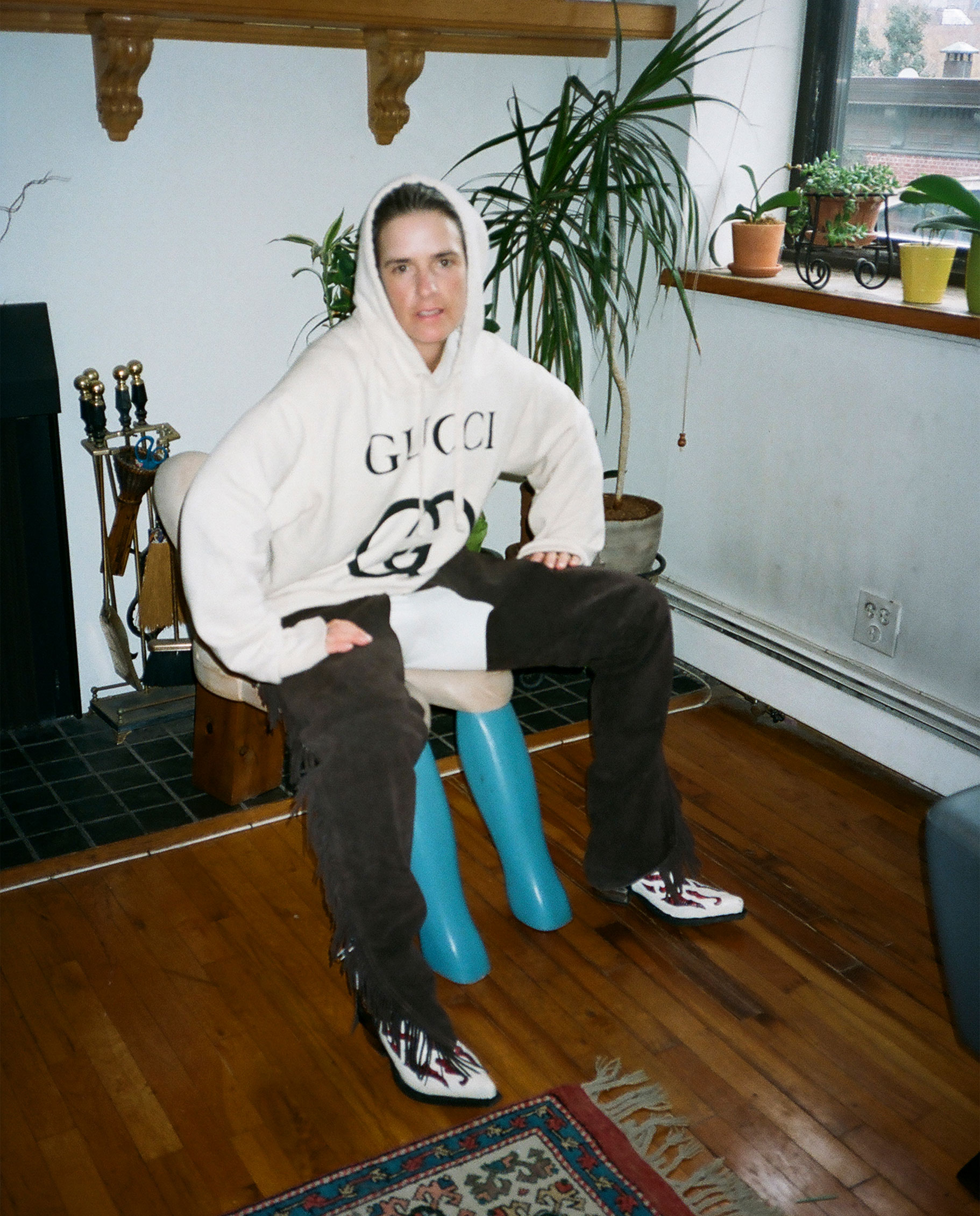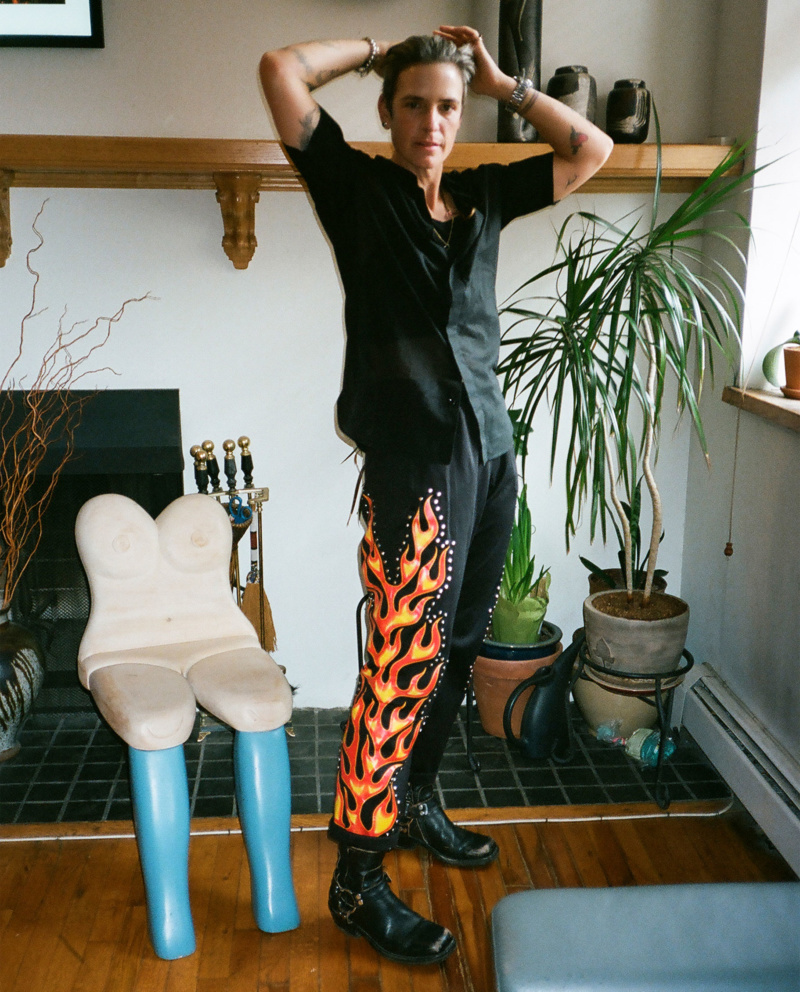
“We met at the gallery. Cajsa came to the grand opening of Capricious 88, as it was called then,” says the gallerist and photographer Sophie Mörner on a cold, winter afternoon. She’s perched legs-crossed atop a neon pink faux fur-tufted chair beneath a tall window overlooking the edge of Allen Street in New York’s Lower East Side, gesturing towards her wife, the sculptor Cajsa von Zeipel, who stands in the doorway clutching a resin-cast visage of two faces interlocked in a tongue-frenzied kiss. The couple, who had an extravagant wedding on a farm outside Stockholm last summer, share an office-studio space speckled with von Zeipel’s towering mixed-media humanoids, unmarked save for a small sticker on the door reading “Shut Up.” “We didn’t know each other at all, but we had Googled each other a lot,” says von Zeipel. “And when you Googled Sophie, especially back then, it was all these weird horse photos and family pictures. So I was like, who is this crazy person?”
The studio is just down the hall from Baby Company, the newly-launched extension of Mörner’s Manhattan gallery, Company. It’s a smaller space than its parent, which opened in 2015, but Mörner prefers it that way for the close-knit vibe it lends its programming. On a recent day, that included a panel discussion moderated by the photographer Angal Field, whose documents of their friends—relaxing by the Pacific or stretched out in bedrooms—illuminated the walls. “It’s all about company: friendship and hanging out and companionship,” Mörner says of the space’s namesake. Her salt-and-pepper hair is tied back, and a gem glued to her canine tooth flashes as she speaks. “It’s nice to have a space feel more intimate.”
Intimacy. It’s the connective thread that weaves throughout Mörner’s career, in the spaces she keeps as well as the work she creates. Take her most recent project, a photographic series exploring themes of submission and trust: Mörner, who moonlights as an equestrian, imagines scenes of bondage by tying women by rope to horses. “It’s about the tying, the constraining, and trust,” she explains, noting that many of her models have never been around the animals in such close proximity. “It creates a kind of a tension. And they have to trust me 100 percent.”

Likewise, as the proprietress of two exhibition spaces, the book publisher Capricious—named for the photography magazine she founded in 2003 and that ran through 2016, which became an annual photography award in 2017—she’s drawn to artists who have “very intimate relationships to their work,” curating a roster that includes feminist filmmaker Barbara Hammer and Yale-trained collage-maker Troy Michie, as well as von Zeipel.
“It becomes a lot like a self-portrait, of sorts, or something that really represents them,” she says. Raúl de Nieves, the Whitney Biennial alum whose painstakingly time-intensive process involves hand-gluing thousands of tiny, glittering plastic beads until they form elaborate costumes and decadently textural abstractions is one such example. Influenced by the indigenous crafts of his native Mexico, de Nieves’s largest work to date became one of the buzziest pieces at December’s Art Basel: a functioning carousel of sparkling beaded horses, a dragon and a mother figure in a downward-dog pose. “But that is all his making,” says Mörner, who took a chance when she gave de Nieves his first show with Company in 2016. “I supported him along the way, and we continue to do so, but he has that force, you know? An artist just needs someone to believe in them.”
“Not everything brings in money but, for Sophie, that’s not the overall goal,” says de Nieves, while preparing his first solo museum show, on view through April 28 at the Cleveland Art Museum. His collaboration with Mörner, as with many among Company’s roster, began as a friendship. “It’s more about having this moment in time to create these experiences for people—to create people through experience,” he says.










 in your life?
in your life?

